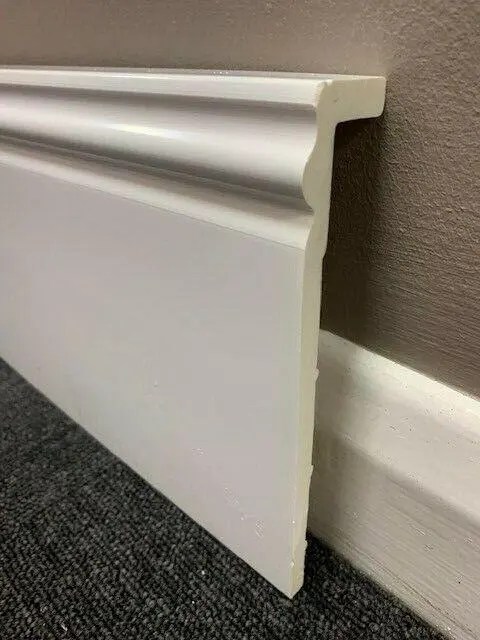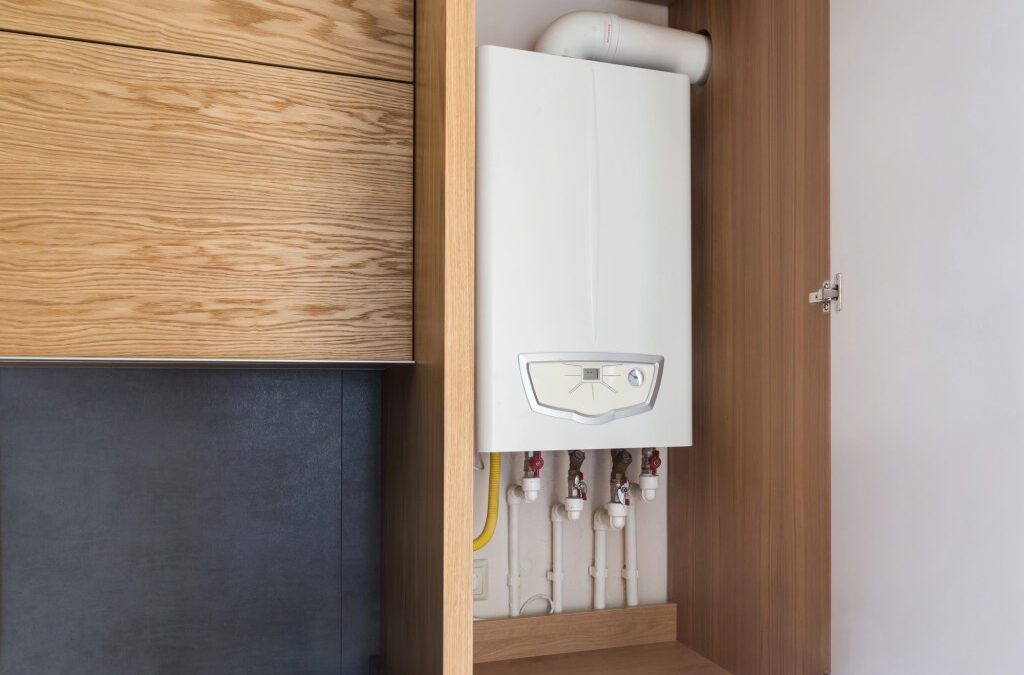Boilers are practical, efficient, and keep us toasty when the British winter does its worst – but let’s be honest: the pipework that comes with them can be downright ugly. Those exposed pipes snaking down your wall or criss-crossing behind cupboards are rarely attractive, and they certainly don’t fit in with that clean, curated look many of us want in our homes.
But before you go into full avoidance mode (you know the one – rearranging your furniture just so you don’t have to see them), let’s chat through some brilliant ways to cover, conceal, disguise, or even embrace your boiler pipes. Because with the right approach, those awkward lines of copper and plastic and unattractive pipes can be tamed into something far more elegant.
Why Hide Boiler Pipes in the First Place?

While some interior design styles like to celebrate raw, functional features – think industrial chic and loft conversions – most people would rather keep things sleek. Boiler pipes, by their very nature, are usually exposed in the most inconvenient places: above kitchen cupboards, in utility corners, running along walls in bathrooms or hallways.
These visible pipes can clash with your room’s aesthetic, make a space feel cluttered, or simply look unfinished. And when you’ve gone to all the effort to pick the perfect wall colour, tile pattern, or flooring, a clunky copper pipe really can ruin the vibe.
The good news? There are boiler pipe cover ideas for every style, every budget and every type of home. Here are some of our favourite solutions.
Boxing In: The Reliable Classic

Let’s start with the tried-and-true method and a popular way of disguising – boxing in your boiler pipes. Pipe boxing is essentially creating a neat cover (like a little cabinet or column) around the pipes using MDF, plywood or another panel material, and then decorating it however you like.
What you’ll need:
- Timber or MDF panels
- Battens or brackets
- Screws or fixings
- Paint or wallpaper
You can paint your cover for boiler pipes to match your walls for a seamless look, or use wood panelling or wallpaper to turn it into a decorative feature. It’s also a perfect opportunity to carry a wall detail – like tongue-and-groove panelling – right across, making it all look intentional.
If you choose to opt for this route, make sure you leave space for ventilation (especially around hot water or heating pipes) and easy access for maintenance.
Pipe Casing and Decorative Covers

Not ready to build a whole box to cover boiler pipes? No problem. You can tidy things up in minutes with boiler pipe casing or pipe covers. Boiler casings are usually snap-on tubes or sleeves that slip over existing pipework to hide the surface material; they’re especially useful for hiding unsightly pipes and a mismatch of copper and white plastic.
These attractive casings and covers now come in plenty of finishes, including:
- Chrome pipe cover
- Brushed brass pipe cover box
- Matte black boiler pipe casing
- White or paintable PVC heating pipe cover
- Wood-effect style pipe box cover
They’re a quick, no-fuss fix that works particularly well in visible kitchen or bathroom areas. Just choose a finish that complements your taps, radiator valves or cabinet handles, and voilà – instant cohesion.
Custom Skirting and False Walls

This one’s for the detail-lovers: if you’re already planning some joinery or wall work, it can be well worth designing a skirting board or false wall that tucks the pipes neatly out of sight.
Let’s say you have vertical pipework running down from the ceiling in a hallway. You could build a narrow stud wall around it, plaster over, paint to match, and – just like that – it disappears. Or, for horizontal unsightly boiler pipes along the base of a wall, add an extra-deep skirting board. It hides the pipe, adds architectural charm, and no one will suspect a thing.
This method takes a little more time and effort, but the results can be seamless. It’s ideal during renovations or if you’re making broader updates to a room anyway.
Radiator Covers and Side Cabinets

If your boiler pipes are part of a central heating system and connect to radiators, radiator covers can be a fantastic double-duty option. A stylish radiator cover doesn’t just conceal the radiator itself – it can often hide much of the connected pipework too.
Many off-the-shelf radiator covers have hollow legs or a frame base that will hide pipe runs beneath. Or you could commission a made-to-measure design that tucks away everything except the heat.
Similarly, a narrow side cabinet or tallboy placed cleverly next to or in front of pipes can make them all but vanish – while adding valuable storage to boot. Just make sure there’s enough ventilation.
Shelving Around the Pipes

This one’s great for smaller spaces: if you’ve got a few vertical pipes running down the wall in a kitchen, bathroom or utility room, consider installing open shelving around or even across them.
Wooden shelves supported on either side of the pipe run can frame the piping and divert the eye. Display plants, jars, towels or books and you’ll soon find the pipes fade into the background.
If you’re working in a kitchen or bathroom, opt for moisture-resistant materials or glass for a more minimal look. In living areas, rustic wood can add warmth and charm, especially when paired with clever styling.
Integrated Cabinets and Utility Cupboards
[embedded content]
If your boiler itself is wall-mounted (as most modern boilers are), why not build a shallow boiler cupboard around it and its pipework? It’s common in newer homes to hide boilers in kitchen cabinets, but even if your boiler is in a hallway or bathroom, slimline boiler covers in the form of a cabinet can work wonders.
Include cutouts for ventilation and servicing, and make it part of a wider built-in storage unit if you’ve got space. You could even include shelves above or below for cleaning products, towels or tools.
Want to take it further? Use matching doors or paint the cabinet in the same colour as your walls for a true camouflage effect. Or go bold and make it a design feature with bright colours, slatted panels or rattan fronts.
Paint Them Out

Sometimes the simplest solution is the best. If boxing-in or cabinetry isn’t an option, try painting the pipes the same colour as the wall behind them. It’s a trick decorators have used for years, and it can be incredibly effective – especially in small or narrow spaces.
By removing the colour contrast, your eye stops catching on the pipework and simply glides over it. Want to go the other way? Paint them in a bold contrasting colour and make them part of the aesthetic, especially if you’re leaning into a modern, playful or industrial look.
Just make sure you use heat-resistant paint if the pipes carry hot water or heating.
Embrace the Industrial Vibe
Let’s flip the script for a second: what if the pipes weren’t a problem, but part of the solution?
In certain settings, such as converted warehouses, contemporary kitchens or minimalist bathrooms, exposed pipework can actually look fantastic. Especially if they’re clean-lined, run in a logical or symmetrical way, and have a beautiful finish like brushed copper, aged brass, or matte black.
You can clean up the surrounding area, tidy up any old insulation, polish the metal or even use spray finishes for an intentional look. Paired with clean tiles, concrete floors or raw plaster, the pipes can become design accents in themselves and can look modern, considered, and far from accidental.
Fabric Panels or Soft Screens
For a softer, more flexible approach to boiler pipework – particularly in rented properties – fabric panels or screens can be a smart workaround. You can use tension rods and curtains to hide awkward pipework, or add a fabric panel in a corner where the boiler sits.
This method can feel especially cosy in laundry spaces or utility nooks. Choose a pretty ticking stripe, linen blend or bold print to turn it into a design moment. Plus, it’s easy to remove if needed for maintenance.
Wall Art, Plants and Distraction Techniques
Sometimes, it’s not about hiding the pipes involved in your heating system; it’s about drawing the eye somewhere else. A well-placed mirror, a vertical row of framed art, or a tall potted plant can distract beautifully from exposed pipework.
In bathrooms or utility rooms, a hanging rail with towels or baskets can serve the same purpose. Create a gallery wall, place a ladder shelf or lean a tall mirror nearby – any of these tricks will help soften the space and redirect attention.
Disguise can be subtle, clever, and layered, not just brute force cover-ups.
A Few Things to Keep in Mind

Before you grab your screwdriver or MDF panels, here are a few quick things to remember about boiler pipe covers:
- Proper ventilation is crucial – Especially around boilers and hot water pipes. Don’t seal things off too tightly or you risk reducing airflow, which can affect efficiency or safety.
- Accessibility matters – Your plumber (or future you) will thank you if the pipework is easy to reach for regular maintenance, routine servicing or leak-checks.
- Use appropriate materials – Heat-resistant paint, moisture-proof MDF, compliant sustainable timber and safe fixings will all help your covers for boiler pipes last longer.
- Check with your gas engineer – If you’re working near your boiler, particularly around flues or controls, always make sure any work complies with safety regulations.
Final Thoughts: From Eyesore to Elegant
Let’s face it – none of us asked for boiler pipes to be part of our décor dreams. But the truth is, with a little creativity and a few smart design tweaks, they don’t have to be an eyesore. Learning how to cover boiler pipes effectively can transform them from something awkward and intrusive into a seamless part of your home’s aesthetic.
Whether you go down the route of custom joinery, pick up a clever entire boiler cover, or simply wave a paintbrush in their direction, the goal is the same: to make your space feel like yours. Calm, clean, clutter-free – and free from those little design irritations that make your eye twitch every time you walk past. Because a well-designed home isn’t just about what you add, it’s about what you choose to hide. And now that you know how to cover boiler pipes in a way that works for your style and space, you’ve got all the tools you need to create a room that feels truly finished.
Related
<!–
–>

